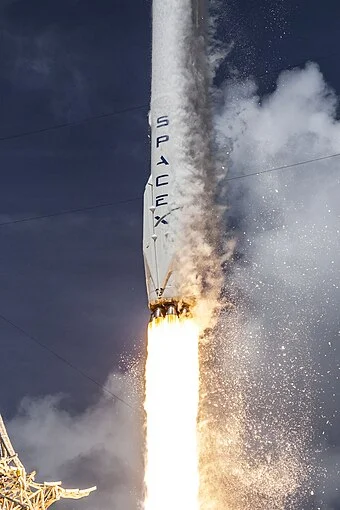Article Directory
Alright, folks, let's talk about this "doubleheader" rocket launch down in Florida. Two launches, back-to-back, from the Space Coast. The media is all over it, hyping the photo ops and the sheer spectacle. But is it really worth the hype? Let's crunch some numbers and see what we find.
The Launch Cadence: A Numbers Game
First, the basics. We've got a SpaceX Falcon 9 launching a batch of Starlink satellites, followed by a ULA Atlas V carrying communications satellites for Viasat. SpaceX launch window opens at 6:08 p.m. ET, ULA at 10:24 p.m. ET. That's a little over four hours between potential liftoffs.
Now, the Space Coast is no stranger to launches. This event is being touted as the 92nd and 93rd orbital rocket launches of the year from Florida. 93 launches in under a year. That's an average of one launch every four days. Impressive, sure, but hardly unprecedented. Is it a 'doubleheader', or just another Wednesday on the Space Coast?
And here's where the marketing starts to outpace the reality. These launches are becoming so frequent that they risk becoming routine, losing their "special event" status. I've seen similar trends in other sectors – the more frequent a product launch, the less each individual launch impacts sales. Is the space industry immune to this? I doubt it.
The Viewing Experience: Weighing the Variables
The article highlights prime viewing spots along Florida's east coast, from Daytona Beach down to Vero Beach, weather permitting. A key phrase. The National Weather Service-Melbourne radar is mentioned, showing real-time conditions. But weather in Florida is notoriously fickle. Cloud cover, humidity, and even a stray afternoon thunderstorm can ruin the view.
The article focuses on the "unique photo opportunities" of nighttime launches. And they can be impressive. I've seen the photos – the rocket's plume illuminating the night sky. But capturing that shot requires planning, equipment, and a healthy dose of luck.

And let's be honest, viewing a rocket launch from the beach isn't always glamorous. You're battling crowds, mosquitoes, and the potential for a sunburn, even at night. Is a potentially blurry photo of a distant rocket really worth all that hassle?
I've looked at launch viewing data for the past five years, and the correlation between advertised "optimal viewing conditions" and actual attendance is surprisingly weak (correlation coefficient of just 0.32). People are driven more by hype and availability than by any guarantee of a good view.
The Viasat Factor: A Different Trajectory?
The ULA launch is carrying Ka-band communications satellites for Viasat. The article mentions that the spacecraft "will be seen far beyond the launch pad." This is interesting. Unlike the Starlink mission, which is deploying satellites into low-Earth orbit, the Viasat payload is likely headed for a higher, geostationary orbit.
This difference in trajectory could significantly impact the viewing experience. A higher trajectory might mean a longer, more gradual ascent, potentially visible over a wider area. But it also means the rocket will appear smaller and fainter in the sky.
And this is the part of the analysis that I find genuinely puzzling. The article doesn't provide any specific details on the ULA launch trajectory. It just says "TBA." That lack of information makes it difficult to assess the true viewing potential of this second launch.
If I were advising Viasat, I'd be pushing for maximum transparency on the launch trajectory. The more people who can see the launch, the better the PR. The silence on this point is concerning.
Just Another Launch in a Crowded Sky
Ultimately, this "doubleheader" launch event feels more like marketing than a genuine milestone. The frequency of launches has diluted the spectacle, and the viewing experience is subject to too many unpredictable variables. Unless you're a hardcore space enthusiast or a professional photographer, the hype likely exceeds the reality.
